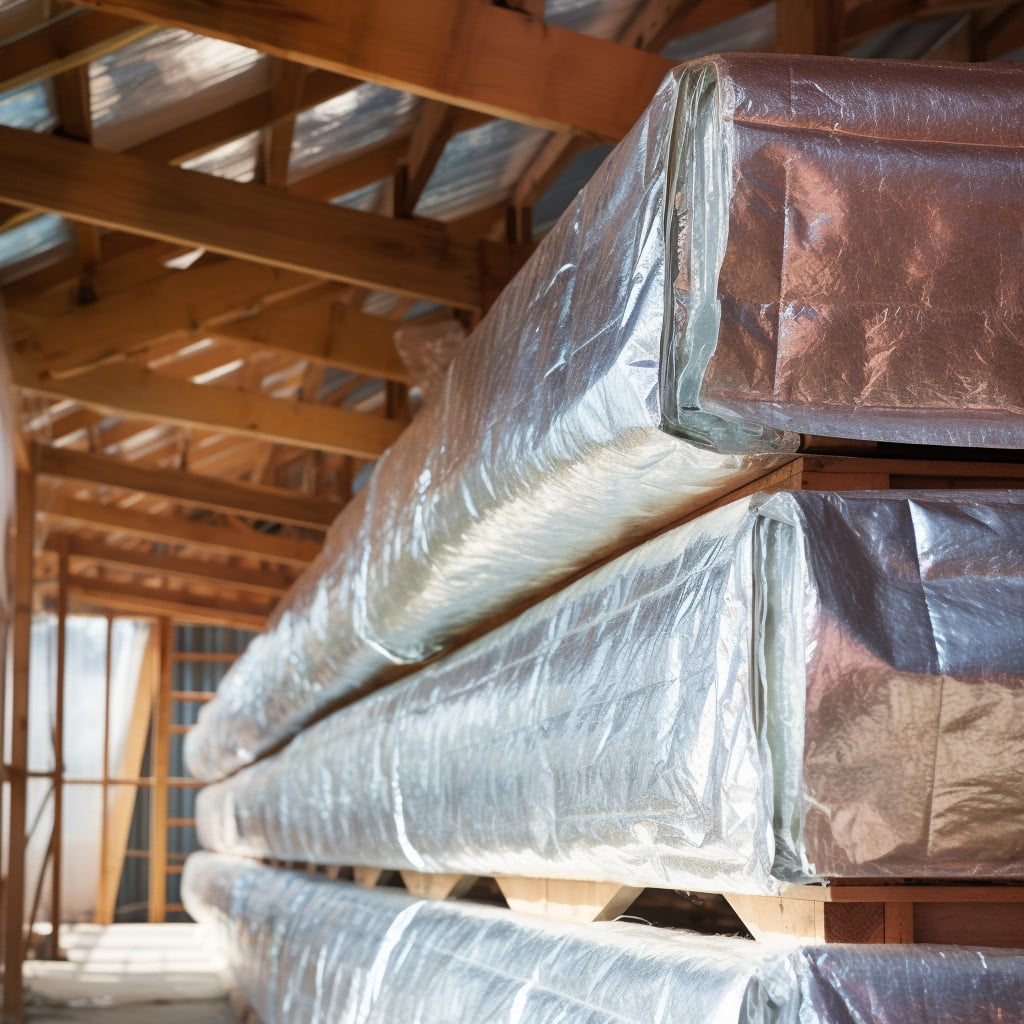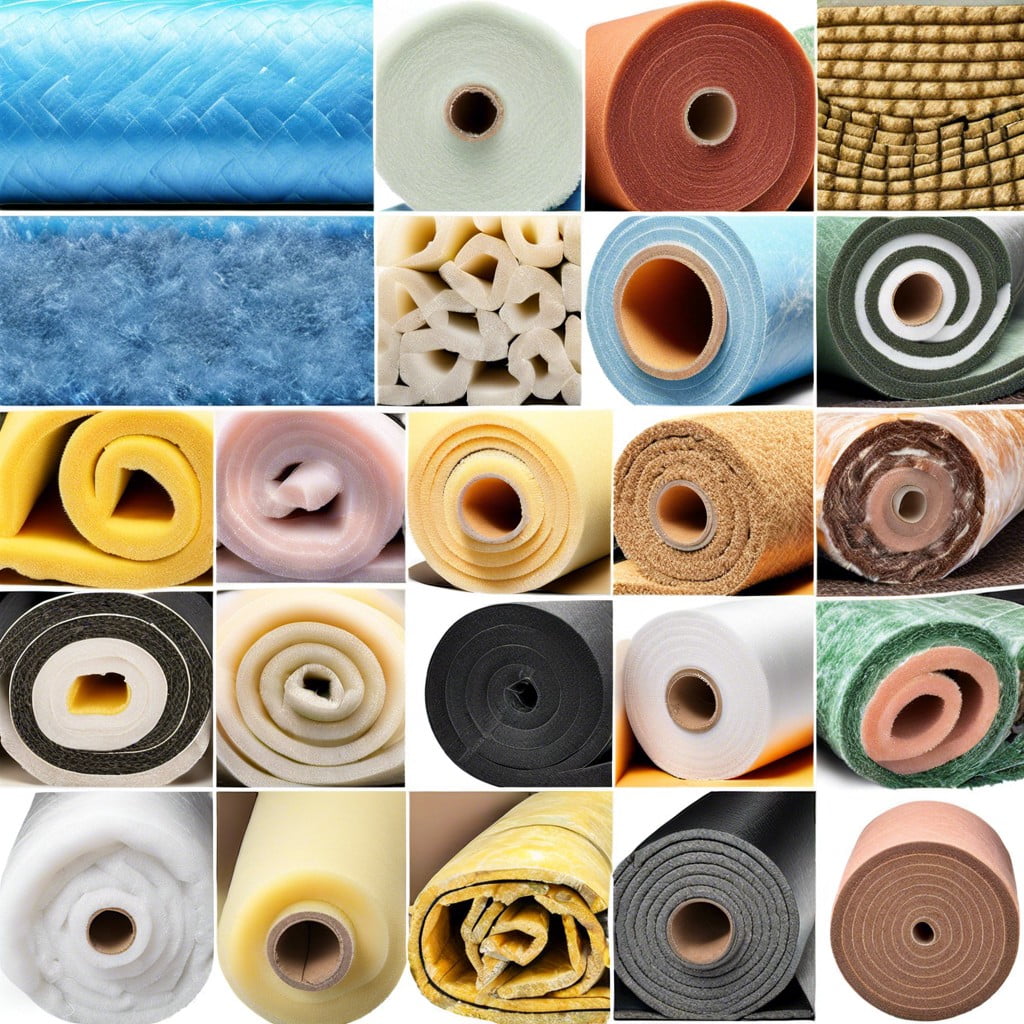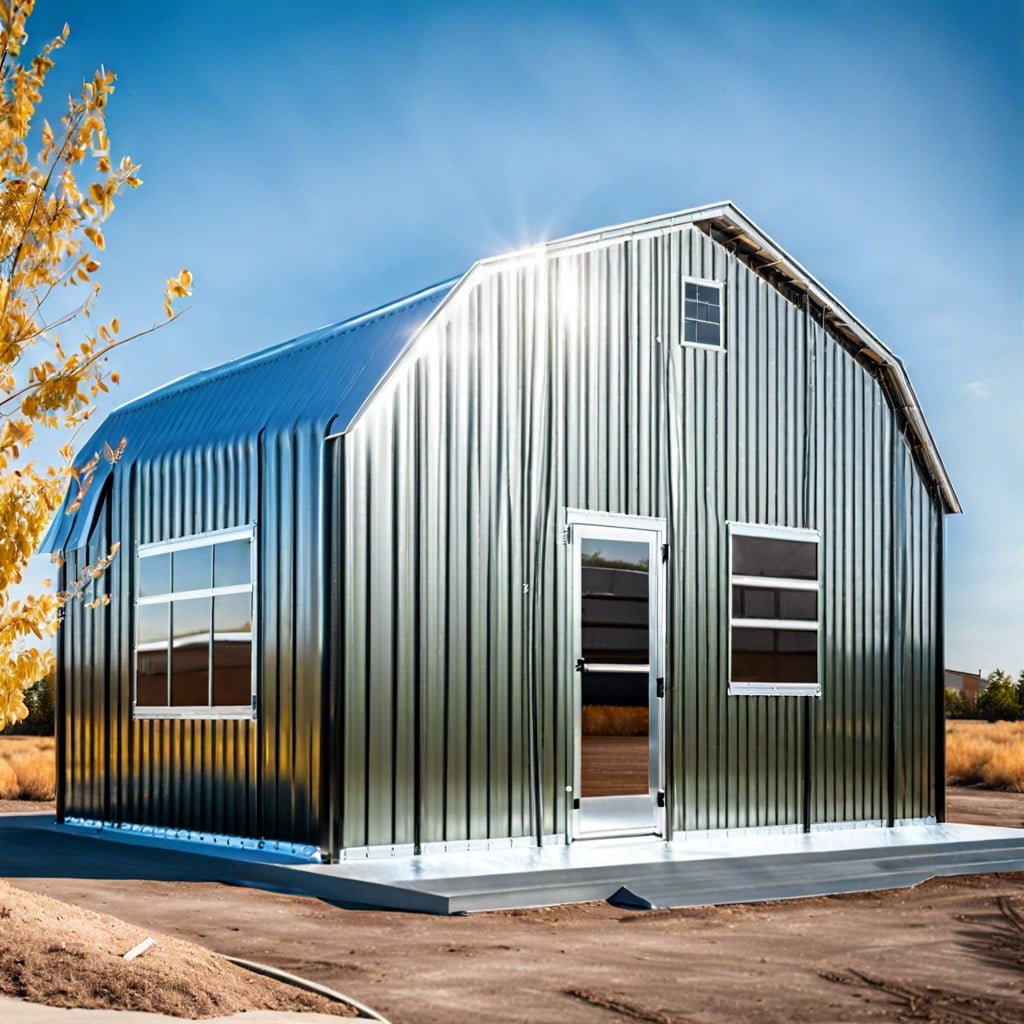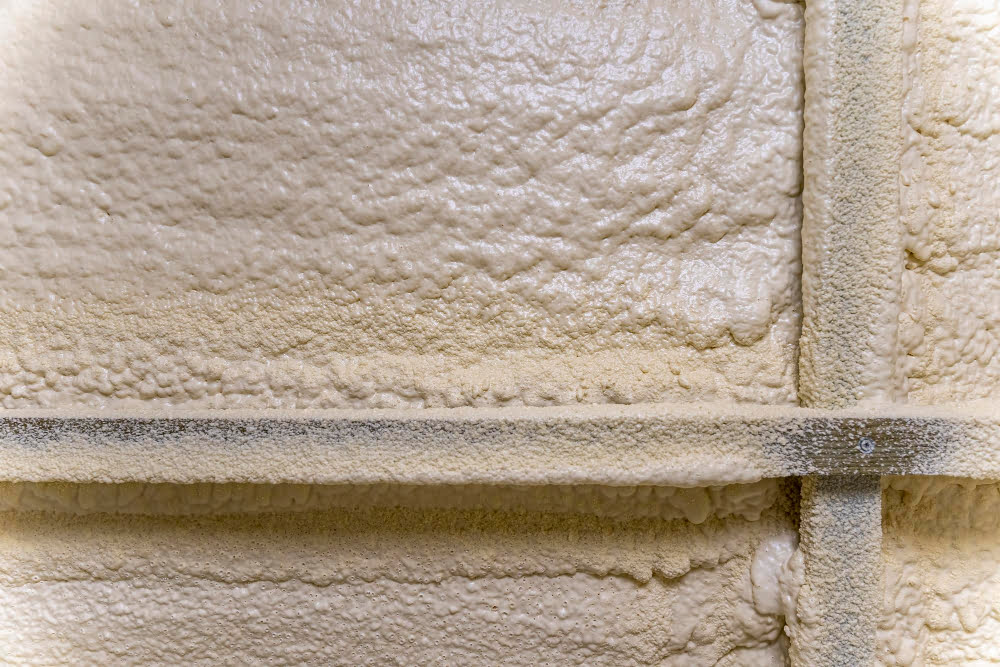Explore practical ways to prevent condensation, a common issue in metal buildings that can lead to structural damage and health risks if not properly addressed.
Condensation in a metal building can be a persistent issue, but it’s not one without solutions. Addressing this problem involves understanding the causes and implementing effective preventive measures.
This article provides a comprehensive guide on how to stop condensation in a metal building, including the use of insulation, ventilation, and vapor barriers. By following the steps outlined here, you can protect your metal structure from the damaging effects of condensation, ensuring its longevity and functionality.
So, whether you’re battling with droplets on your tools or worrying about rusting beams, read on to find the best solution tailored to your needs.
Key takeaways:
- Understand the likely sources of moisture in metal buildings
- Differentiate between visible and concealed condensation
- Utilize insulation, vapor barriers, and proper ventilation
- Use a dehumidifier and consider additional materials for control
- Prevent and treat rust caused by condensation
Understanding the Likely Sources of Moisture in Metal Buildings

Certainly, the first step to combating moisture accumulation is identification. Condensation results when warm humid air, often seen during the warmer months, comes in contact with the cooler steel panels of the building. Moreover, storms and rainfall are short-term sources of moisture.
In contrast, internal factors like your building’s everyday usage can also contribute to this issue. For instance, industrial processes, agriculture, and human respiration may increase the interior humidity level.
Even the geographical location and local weather patterns can contribute. For example, the buildings situated in humid climates like coastal regions are at higher risk. Lastly, remember that unseen damp soil underneath the building can act as a regular moisture source. By understanding these points, you can devise a plan to counteract condensation.
Types Of Condensation in Metal Buildings

There are primarily two types of condensation that could occur in metal buildings: visible and concealed. Visible condensation is what you often see on surfaces, notably on walls and ceilings, when moist air comes in contact with a cold surface. It’s typically easy to identify and treat. On the other hand, concealed condensation is more tricky as it occurs within the walls and under the insulation. It can often lead to long-term structural problems if not addressed immediately, thus posing a significant challenge. Understanding these different types helps to target and implement precise corrective actions.
Eliminating Condensation Problems in Metal Buildings

Condensation in metal buildings can be effectively minimized with a few precautions and techniques. Firstly, manage the indoor temperature by using heating and cooling devices responsibly. This helps to create a stable environment inside the building, reducing the chances of condensation forming.
Another significant aspect is the proper installation of a vapor barrier. Essentially, it’s a material placed between the insulation and the metal panels to impede the movement of moisture-laden air, thus preventing it from reaching the cold surfaces and turning into liquid.
Furthermore, sealing all potential entry points for moisture, like doors, windows or any cracks, is equally vital. Weatherstripping or caulking them can successfully curb unwanted moisture intrusion.
Lastly, effective drainage systems can furnish a long-term solution for condensation. Install gutters and downspouts to direct water away from the structure, minimizing potential exposure to excess dampness. The roof slope also plays a key role in draining off rainwater, deterring it from sitting on top and increasing humidity levels.
How to Use Correct Insulation to Prevent Condensation in Metal Buildings

Insulating a metal building is an efficient and effective way to control condensation. It entails adding layers of materials designed to reduce heat transfer and control moisture infiltration and accumulation.
Start with the roof, by adding a vapor barrier like sealed plastic or specially treated paper that resists water penetration. Be careful to avoid punctures in the vapor barrier as any damage could allow moisture to seep into the building, increasing the chances of condensation.
The walls of the building require insulation too. Install a layer of welded wire mesh and add rigid foam insulation. Secure it in place with steel bands. Ensure the foam reaches the required R-value prescribed by local building codes.
The floor of the building is another critical aspect. Although overlooked, it accumulates moisture from ground seepage if not well insulated. Concrete slabs should be sealed properly. One may consider using breathable flooring material over the concrete providing a barrier through which the moisture can slowly evaporate.
Remember, quality of insulation materials matters, especially in metal building construction. Pick high-quality materials that will not only serve their purpose but also last long. Also, consider professional assistance in insulation installation for best results and longevity.
Lastly, frequent maintenance checks to ensure the work remains in top condition is paramount. Cracks, tears, or any signs of wear and tear on the insulation can lead to condensation issues. These checks help notice any faults early enough for prompt mitigation. Keep in mind that the maintenance checks not only ensure a condensation-free environment but also extend the lifespan of the construction.
Insulating your metal building might have an upfront cost but consider it an investment to minimize future issues, especially those related to condensation. The resulting dry and comfortable interior is worth every penny.
Effective Ways to Increase the Building’s Ventilation to Stop Condensation
First off, utilize existing openings in the overall design of the building where practical. Making use of ridge and soffit vents lets the building ‘breathe’. Airflow moving up from the soffits and out through the ridge vents will take away moisture. Keep these vents free from obstruction to ensure optimal functionality.
Next, consider incorporating louvred vents into the building design. These openings allow warm and moist air to leave while blocking cold air and precipitation from entering.
Still on design, having a properly sized HVAC system can significantly limit internal humidity levels. By adequately controlling the temperature, an efficient HVAC system can deter condensation.
Moreover, use of powered ventilation, like extract fans or whirly birds, can also be an effective method. This solution can be particularly advantageous in areas of high humidity or where the building is generating a fair amount of internal moisture due its usage.
Finally, remember that ventilation should also be thought about at the stage of positioning your building. Try to place the building in an open area where air circulates freely. Reduced wind exposure can lead to condensation problems.
In a nutshell, the goal is to limit the temperature difference between the interior and exterior surfaces of the building, and to reduce the interior humidity. Ventilation is one the key methods to achieve this.
Importance and Ways of Using a Dehumidifier in a Metal Building
A dehumidifier plays a crucial role in maintaining the optimal humidity level in your metal building. High humidity can result in condensation which may lead to various problems such as rust or even structural damage. When used correctly, this device can help maintain a dry and comfortable environment which is conducive for both storage and human occupation.
Below are some optimal ways to use a dehumidifier in your metal building:
- Placement: Locate your dehumidifier in areas where dampness is most pronounced, such as near doors and windows, or where water supply lines are present.
- Size: Match the capacity of the dehumidifier with the size of the space. This ensures maximum efficiency.
- Regular Emptying: Depending on the model, the dehumidifier’s tank may need to be emptied daily. Some models can be set up to drain continuously, making them virtually maintenance-free.
- Using a Hygrometer: This device measures humidity levels. Keeping one in the metal building helps monitor and control the internal climate effectively.
- Timely Maintenance: Regular cleaning and maintenance of the dehumidifier will ensure it runs efficiently and lasts longer. Following the manufacturer’s guidance helps in appropriate maintenance.
Using a dehumidifier effectively in your metal construction can help you control and prevent condensation, thereby averting potential issues related to dampness.
Effects of Using Different Materials With Metal
Utilizing other materials in conjunction with metal has significant impacts on condensation control, often enhancing the performance of metal structures. Here are a few points to illustrate this concept:
1. Wood: Using wood for interior framing can impede temperature transfer, reducing surface condensation on the inside of metal walls.
2. Drywall: Drywall provides an additional barrier that helps shield the inner metal surface from moist air, reducing its exposure to condensation.
3. Insulation Materials: Using fibreglass, foam, or reflective insulation can minimize heat transfer between the inside and outside of a metal building, effectively managing the amount of condensation.
4. Vapor Barriers: Hybrid materials combining insulation with vapor barriers can deter the passage of moist air into the building while enhancing thermal control.
5. Metal Panel Types: Opting for insulated metal panels can deliver excellent thermal performance while controlling condensation issues.
So, it’s clear that the choice of additional materials used alongside metal is a defining factor in managing condensation in your metal building.
Preventing and Treating Rust Caused By Condensation in Metal Buildings
Manage your building’s moisture levels to keep rust at bay. Start by using rust-resistant metals such as galvanized steel or aluminum for construction. In the case of existing structures, apply rust-proof coatings as an added safeguard. It’s an investment that can extend the lifespan of your metal building.
Always keep up with regular maintenance. Inspect your structure periodically for any signs of rust. Start treatment immediately if rust is spotted. This can be done through sanding or grinding to remove the rusted area and then applying a rust-inhibitive primer followed by quality paint.
Sealing any holes or fractures is another critical step. Moisture can seep into these small openings and create a prime environment for rust formation. Use a high-quality, rust-resistant sealant for this task.
Finally, routine cleaning can make a considerable difference. Dust and dirt can trap moisture against the metal surface, promoting rust. Regular washing with mild soap and water can prevent this issue.
FAQ
How do you prevent condensation in metal buildings?
To prevent condensation in metal buildings, it's essential to improve ventilation by methods such as opening windows and doors when temperature conditions are suitable.
Does spray foam stop condensation on metal building?
Yes, spray foam insulation effectively stops condensation on metal buildings by keeping the ceilings warm and forming a vapor barrier.
How do I stop my metal roof from sweating and dripping condensation?
To stop your metal roof from sweating and dripping condensation, ensure there exists a consistent and efficient flow of air through effective ventilation over the roof's surface.
What can I paint on metal to stop condensation?
To deter condensation on metal constructions, anti-condensation paint can be applied, which utilizes an elastomeric coating to prevent dampness from reaching the surface.
Can ventilation systems effectively reduce condensation in metal buildings?
Yes, ventilation systems can effectively reduce condensation in metal buildings by controlling the moisture and temperature levels inside the structure.
What role does insulation play in preventing condensation in metal structures?
Insulation in metal structures prevents condensation by reducing the temperature differential between the inside and outside of the structure, minimizing the likelihood of moist air condensing on cooler surfaces.
Is there a reliable modern method to eliminate condensation in my metal building?
Yes, a reliable modern method to eliminate condensation in a metal building involves using insulation, preferably with a high R-value, along with adequate ventilation.





